I just loved Kanazawa. When I arrived I just felt like I had stepped into a real Japanese town. Not like Kyoto, which is pretty and touristy or Tokyo, which is just too much. Kanazawa feels just like a normal town, with normal people. Quiet and beautiful.
I arrived early morning with the over-night bus
. The bus driver welcomed us in Kanazawa with a paper crane. So nice! I reached my hostel around 8am. I would recommend this hostel to anyone. Shaq, the owner, is really a nice and fun guy, also full of great advice.
I first went to the castle. I bought some take away breakfast en route, aka, my usual milk tea and a pastry. The park around the castle has a lot of cherry trees; some are pink, others white and many display all the shades in between. What a show! I found a Japanese-style picnic table under the blossoms to have my breakfast. What a peaceful place! And a relaxing atmosphere. It is almost the end of the blossom season and the petals are starting to fall. The show is amazing, it feels like warm snow.
I walked all the way to the castle, or what is left of it. Most of it was destroyed by fire centuries ago. As I was reaching the main gate, I saw an old man making grasshopper with a blade of grass. I came closer to see how he was doing and when he saw me he just came to talk to me. He put the grasshopper-in-progress that he had in his hand in mine, and started to explain how to fold the grass. All that in Japanese of course! I didn't understand half of what he was saying but somehow I managed to finish the grasshopper! Well done me! At the information centre, I saw a sign for free tour in English. When I asked about the schedule, they told me 'now if you want'
. Sure, let’s go! My guide was a middle-aged woman born in Kanazawa. She actually went to university on the castle ground. Indeed, for several decades, the university occupied the castle ground until it was moved to the outskirt of the city in the 90s.
The castle was built at the end of the 16th century and was home of the Maeda clan, lord of Kaga. In the late Edo period, the Maeda clan was extremely rich (at that time, wealth was assessed by the amount of rice one could produce per year). The Maeda clan came second just after the Tokugawa shogun. It was not to the shogun taste to have such a rich potential rival, thus to avoid conflict, the head of the Maeda clan had to show he had no military ambitions. This way, Kanazawa became an important art and craft centre; exceling in domain like pottery, gold leaves and embroideries. For example, the gold leaves that were used on the Kinkaku-ji in Tokyo came from Kanazawa. Nowadays, Kanazawa is still famous for is crafts (mainly pottery).
Despite the lack of military ambitions from the leader of the Maeda clan, the castle was still built as a fortress, however in a subtle way. For example, the gates were designed in an L-shape in order to slow down the enemies’ army (with obviously a heavy door at each end of the 'L’). From outside the castle’s wall would look plain, but some of the square grey bricks are just masking a hole in the wall
. These bricks can be pushed from inside to allowed to shoot at the enemies. Also the warehouse would hide an armoury, and the roof is built in lead. This is the only lead roof in Japan (or one of the very few). There are three good reasons to have a lead roof: first it is fire-proof, it is very light (snow falls are very heavy in this part of Japan), in the case of a siege the tiles could be melted into bullet (says the legend), and the whitish colour the lead takes when it age is pretty (ok that’s four reasons).
On my way back to the hostel, I had lunch at a sushi place in the market. It was excellent (a place recommended by Shaq). After checking in, I had plans to go to Kenroku-en, Josh a guy at the hostel had the same plan so we went together. Kenroku-en is an old private garden, and is classified as one of Japan’s "three most beautiful landscape garden". And it is indeed beautiful with centuries old tress and well groomed moss carpet. However, it was too big for my liking. I prefer smaller gardens where landscapes are miniaturised and symbolism is more present (i.e. when gravels with wavy lines will represent a river). At the exit, we stumbled upon an ice-cream shop. I had to get one: green tea and red bean flavours. You’ve got to love it (or hate it…).
I went for dinner with Josh, Sasha and a guy from Australia. We had Kanazawa curry. It’s served in an oval-shaped metallic plate; the bottom is filled with rice covered with thick and rich curry sauce
. This ‘base’ is topped with fried cutlet drizzled with tonkatsu sauce. You also have some shredded cabbage in a corner. Yummy and very filing! On the way back to the hostel, we bought some beers and drank them with Shaq, making fun of the weird Japanese music videos and adds. What a day!
J’ai trop aimé Kanazawa. En arrivant, j’ai eu l’impression d’avoir mis les pieds dans une vraie ville japonaise. Différente de Kyoto qui est toute belle et très touristique ou de Tokyo qui est juste ‘trop’, en fait juste une ville normale avec des gens normaux. Une ville calme et agréable.
Je suis arrivée tôt le matin avec le bus de nuit. À la descente, le chauffeur nous a donné une petit grue en papier pour nous souhaiter la bienvenue. Vraiment gentil. Je suis arrivée à mon auberge vers 8h. Je la recommande vivement à tous les gens qui vont visiter Kanazawa. Le propriétaire, Shaq, est super sympas et plein de bons conseils.
J’ai commencé mon exploration de la ville par le château et son parc rempli de cerisiers en fleurs. Je me suis trouvé une table de pique-nique à la japonaise, sur laquelle je me suis installé pour prendre mon p’tit déj’ acheté en route (l’habituel thé froid au lait et une brioche). C’est la fin de la saison de floraison et les pétales commencent à tomber. Le spectacle est grandiose. C’est comme s’il neigeait, ça recouvre le sol et ça virevolte au grès du vent.
Je suis allée jusqu’au château ou du moins ce qu’il en reste
. La plupart des bâtiments ont été détruits par le feu il y a longtemps déjà. En arrivant près de la porte principale, j’ai remarqué un vieil homme qui faisait des sauterelles avec des brins d’herbes. Je me suis approchée et quand il m’a vu il est venu vers moi et m’a mis la sauterelle qu’il était en train de faire dans les mains. Du coup, il m’a expliqué comment la finir. Et tout ça en japonais. Bon j’ai tant bien que mal réussi à plier le brin d’herbe selon ces instructions et ma sauterelle est plutôt réussie ! Bien joué! Le centre d’information était juste à côté et j’ai remarqué un panneau disant ‘tour gratuits en anglais’. Quand j’ai demandé à quelle heure était le tour on m’a répondu ‘maintenant si vous voulez’. Allez c’est parti ! Ma guide est une femme d’environ 50 ans originaire de la ville. Elle a passé ses années universitaires au château. En effet, pendant plusieurs décennies et ceux jusqu’au milieu des années 90 le campus se trouvait là.
Le château fut construit à la fin du 16ème siècle par le clan Maeda, seigneur de Kaga
. Vers la fin de la période Edo, le clan Maeda était très riche (à cette période la richesse se comptait en nombre de sac de riz récolté par année). La richesse du clan Maeda concurrencé presque celle du Shogun Tokugawa et cela au grand mécontentement de ce dernier. Tokugawa n’appréciait guère d’avoir un potentiel rival si puissant. Du coup, pour éviter tout conflit, le clan Maeda du prouver qu’il n’avait aucune ambition militaire. Pour ce faire, le chef du clan décida de faire de Kanazawa un centre artistique et culturel. Il se fie mécène de l’art de la poterie, des feuilles d’or et de la broderie. Par exemple, les feuilles d’or qui ont servi à dorée le Kinkaku-ji à Kyoto ont été produites à Kanazawa.
Malgré le manque d’ambition militaire du chef du clan Maeda, le château fut tout même construit comme une forteresse, mais de manière subtile. En effet, les portes d’entrées sont en forme de ‘L’ dans le but de ralentir l’arrivée des troupes ennemies
. Bien sûr chaque bout du ‘L’ est fermé par une lourde porte en bois. Depuis l’extérieur, les murs du château ont l’air plein mais en réalité certaine brique sont amovible. En les poussant depuis l’intérieur on fait apparaitre un trou pouvant être utilisé par les tireurs. De plus, la réserve cache une armurerie et le toit est fait de tuiles en plomb. Plusieurs raisons à ce toit très singulier : tout d’abord ça résiste au feu, ensuite c’est très léger et permet à la charpente de supporté le poids de le neige, et (selon la légende) en cas de siège on peut fondre les tuiles pour en faire des munitions, enfin, en vieillissant le plomb prend une couleur blanche très esthétique.
En rentrant à l’auberge, je me suis arrêtée déjeuné dans un resto à sushi du marché. Je me suis régalée, on est juste à côté de la mer après tout. Je me suis installée dans ma chambre, et j’allais repartir en direction du Kenroku-en quand, Josh (qui dort ici aussi) m’a dit qu’il y allait aussi. Du coup on y est allé ensemble. Kenroku-en est un jardin privé ancien, et est classé parmi les ‘trois plus beau jardin paysagé’ du Japon. Il était en effet très beau, tout en grâce et harmonie. Cependant, je l’ai trouvé trop grand. Je préfère les petits jardins où tout est miniaturisé et symbolique (i.e. quand une rivière est représentée par des graviers avec des lignes courbes tracées dessus). A la sortie, on est tombé sur un marchand de glace et il a bien fallu que je m’en achète une. Il faut dire qu’ils avaient mes parfums préférés, thé vert et haricots rouge. On adore ou on déteste !
Ce soir, pour le souper, je suis allé avec Josh, Sasha et un Australien. On a mangé un curry de Kanazawa. Alors, vous prenez un assiette-bol ovale, la remplissez de riz que vous recouvrez de sauce curry, par-dessus vous déposez du porc pané (et frit) arrosé de sauce tonkatsu, vous ajoutez un peu de chou râpé dans un coin, et voilà ! On se régale et on est calé. En rentrant, on s’est acheté quelques bières qu’on a bu en compagnie de Shaq (avec qui on s’est moqué des clips vidéo absurde à la japonaise ainsi que des pubs bizarres). Quelle journée !
Falling in love with Kanazawa - part 1
Tuesday, April 15, 2014
 Kanazawa, Chubu, Japan
Kanazawa, Chubu, Japan
Other Entries
-
95Salt mines and dinosaurs
Mar 1333 days prior Zigong, Chinaphoto_camera3videocam 0comment 3
Zigong, Chinaphoto_camera3videocam 0comment 3 -
96UNESCO. Dazu rock carvings
Mar 1432 days prior Dazu, Chinaphoto_camera13videocam 0comment 1
Dazu, Chinaphoto_camera13videocam 0comment 1 -
97UNESCO - Paying a visit to the Terracotta warriors
Mar 1729 days prior Xi'an, Chinaphoto_camera19videocam 0comment 0
Xi'an, Chinaphoto_camera19videocam 0comment 0 -
98Jimjilbang and Bibimbap. Welcome to Korea
Mar 2224 days prior Seoul, South Koreaphoto_camera5videocam 1comment 0
Seoul, South Koreaphoto_camera5videocam 1comment 0 -
99Urban immensity of Seoul city - part 1
Mar 2323 days prior Seoul, South Koreaphoto_camera14videocam 0comment 0
Seoul, South Koreaphoto_camera14videocam 0comment 0 -
100Urban immensity of Seoul city - part 2
Mar 2521 days prior Seoul, South Koreaphoto_camera13videocam 0comment 0
Seoul, South Koreaphoto_camera13videocam 0comment 0 -
101UNESCO - Jeju island, the Hawaii of Korea
Mar 3016 days prior Jeju City, South Koreaphoto_camera23videocam 0comment 0
Jeju City, South Koreaphoto_camera23videocam 0comment 0 -
102Sunny day in Osaka
Mar 3115 days prior Osaka, Japanphoto_camera20videocam 0comment 0
Osaka, Japanphoto_camera20videocam 0comment 0 -
103Hirano jinja
Apr 0114 days prior Kyoto, Japanphoto_camera25videocam 0comment 1
Kyoto, Japanphoto_camera25videocam 0comment 1 -
104Daitoku-ji complex
Apr 0213 days prior Kyoto, Japanphoto_camera10videocam 0comment 1
Kyoto, Japanphoto_camera10videocam 0comment 1 -
105Strolling in the eastern part of Kyoto city
Apr 0213 days prior Kyoto, Japanphoto_camera21videocam 0comment 2
Kyoto, Japanphoto_camera21videocam 0comment 2 -
106More cherry blossoms
Apr 0312 days prior Kyoto, Japanphoto_camera16videocam 0comment 0
Kyoto, Japanphoto_camera16videocam 0comment 0 -
107Arashiyama under sun and rain
Apr 0411 days prior Kyoto, Japanphoto_camera16videocam 0comment 0
Kyoto, Japanphoto_camera16videocam 0comment 0 -
108Few days in Tokyo
Apr 087 days prior Tokyo, Japanphoto_camera7videocam 0comment 0
Tokyo, Japanphoto_camera7videocam 0comment 0 -
109UNESCO - Paying a visit to Fuji-sama
Apr 114 days prior Fujikawaguchiko, Japanphoto_camera35videocam 0comment 7
Fujikawaguchiko, Japanphoto_camera35videocam 0comment 7 -
110Geeking in Akihabara
Apr 114 days prior Tokyo, Japanphoto_camera3videocam 0comment 0
Tokyo, Japanphoto_camera3videocam 0comment 0 -
111UNESCO - Shrines and Temples of Nikko
Apr 141 day prior Nikko, Japanphoto_camera48videocam 0comment 0
Nikko, Japanphoto_camera48videocam 0comment 0 -
112Falling in love with Kanazawa - part 1
Apr 15 Kanazawa, Japanphoto_camera24videocam 0comment 0
Kanazawa, Japanphoto_camera24videocam 0comment 0 -
113Falling in love with Kanazawa - part 2
Apr 172 days later Kanazawa, Japanphoto_camera10videocam 0comment 0
Kanazawa, Japanphoto_camera10videocam 0comment 0 -
114Back in Tokyo, the countdown begins
Apr 183 days later Tokyo, Japanphoto_camera3videocam 0comment 2
Tokyo, Japanphoto_camera3videocam 0comment 2 -
115Tokyo, from peaceful Yanaka to crazy Shibuya
Apr 194 days later Tokyo, Japanphoto_camera12videocam 0comment 1
Tokyo, Japanphoto_camera12videocam 0comment 1 -
116The origin of the flame of Hiroshima and Nagasaki
Apr 205 days later Tokyo, Japanphoto_camera1videocam 0comment 0
Tokyo, Japanphoto_camera1videocam 0comment 0 -
117Museum day
Apr 205 days later Tokyo, Japanphoto_camera8videocam 0comment 0
Tokyo, Japanphoto_camera8videocam 0comment 0 -
118Geek day at Ghibli museum
Apr 216 days later Tokyo, Japanphoto_camera4videocam 0comment 0
Tokyo, Japanphoto_camera4videocam 0comment 0 -
119Last day in Tokyo
Apr 227 days later Tokyo, Japanphoto_camera1videocam 0comment 0
Tokyo, Japanphoto_camera1videocam 0comment 0 -
120Making our way back
Apr 238 days later Tokyo, Japanphoto_camera1videocam 0comment 0
Tokyo, Japanphoto_camera1videocam 0comment 0 -
121Short stay in Northern Germany
Apr 249 days later Kiel, Germanyphoto_camera9videocam 0comment 0
Kiel, Germanyphoto_camera9videocam 0comment 0

 Kanazawa, Chubu, Japan
Kanazawa, Chubu, Japan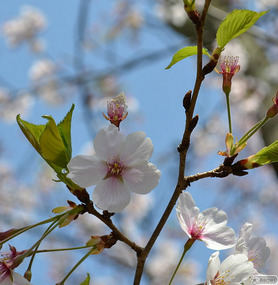
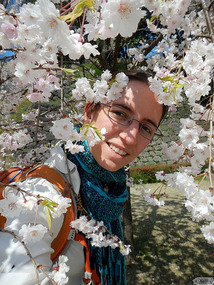
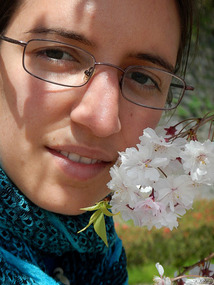
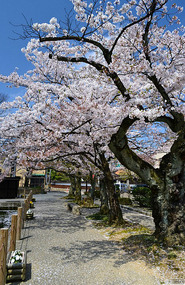

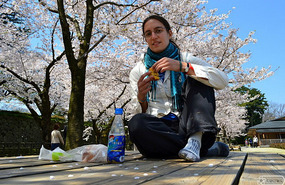
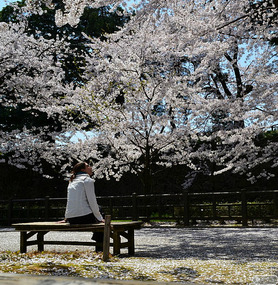




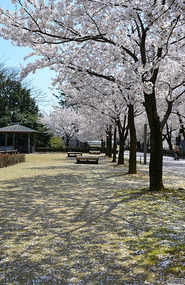
















2025-05-23